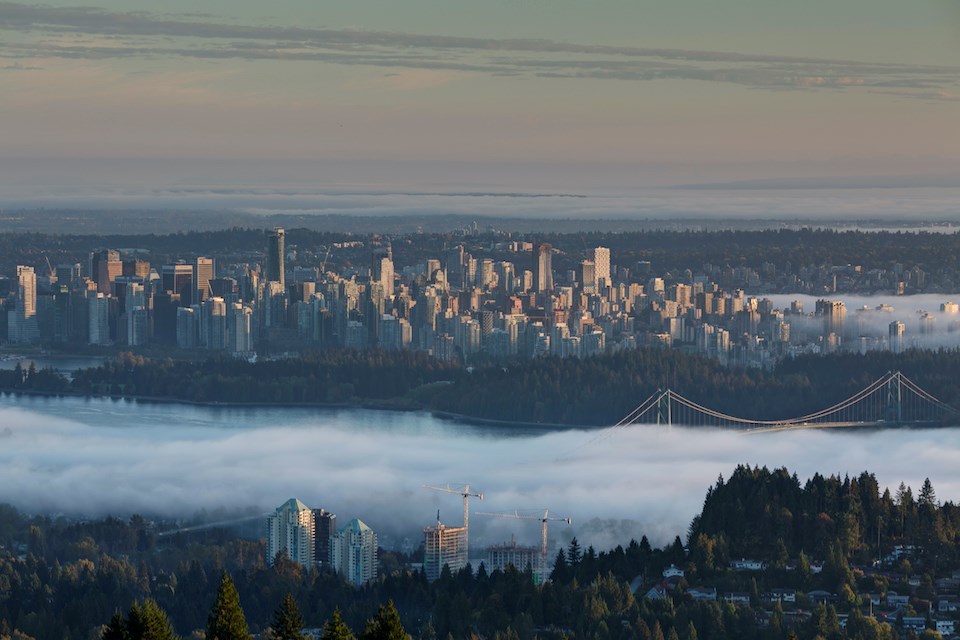Metro Vancouverites recently got their first taste of early fall fog...but only if they were in specific parts of the region.
Environment Canada meteorologist Brian Proctor said nights are getting longer, providing more time for surface levels to cool since there is less solar radiation. When days are longer in June and July, surface temperatures typically don't get cool enough for fog to form.
Meteorological fall kicked off on Sept. 1 and some areas saw fog in the first few days of the month, despite temperatures climbing into the 20s during the afternoon. However, not all areas witnessed the haunting materialization spotted by folks commuting across the Alex Fraser Bridge.
Proctor told V.I.A. that fog is more likely in low-lying areas that don't have wind getting to the surface. These areas "see the coolest temperatures" since air stays stagnant with no energy to dissipate the fog.
"High elevation areas tend to drain coolness off them and the air mass is stirred off," he explained.
Metro Vancouver's early fall fog is typically radiation fog, occurring overnight as solar energy absorbed into the ground during the day radiates into space.
According to the National Oceanic and Atmospheric Administration (NOAA), forms when the surface continues cooling - and there is a deep enough layer of moist air near the ground - and the humidity will reach 100 per cent and fog will form.
Low-lying areas near Vancouver International Airport (YVR) tend to see the most radiation fog. October is the worst offender for days with this kind of fog.
Metro Vancouver weather forecast typically includes fog in late fall, early winter
Proctor noted that October doesn't see the most foggy days everywhere in the Lower Mainland; it only sees the most of one type of fog - and it typically only occurs in lower-lying areas.
Another type of fog, advection fog, forms when warm, moist air passes over a cooler surface and cools. It typically forms in the second half of fall and through the winter and spreads across Metro Vancouver.
Advection fog can form on windy days, forming when warm, moist air is carried across a cool surface. During the winter, this often happens when warm, moist air blows off the Strait of Georgia onto snowy or frosty shores and moves across the region.
"The winter has more widespread coolness. Fog forms in the Georgia Strait and spreads out and there are multiple sources of fog," he explained.
- Related:
November and December typically see the most days of total YVR shutdowns caused by poor visibility. All types of fog can form during these months.
In contrast, Abbotsford International Airport (YXX) is located on higher ground and gets more energy from the sun. While the airport may close in the early morning, it typically opens by the afternoon, even on days with fog.
On days with heavy fog, Proctor reminds drivers to exercise caution.
"Make sure you have your headlights on, no matter the time of day. And slow down, especially in school zones."
Stay up-to-date with hyperlocal forecasts across with V.I.A.'s Weatherhood.




